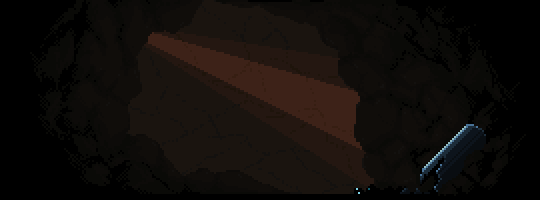Learning Matoran: Lesson 3
Ke ovahi o kii vahi,
ne kharra noie ma
ke kraa o karho,
Kii usmo Mata Nui
A avo inihe ka.
In the time before time
The builders of this world
Labored in Darkness,
Before the Great Spirit brought
Light out of the Heavens.
--From "The Legend of the Bionicle"
=l Intro to Verbs l=
ne kharra noie ma
ke kraa o karho,
Kii usmo Mata Nui
A avo inihe ka.
In the time before time
The builders of this world
Labored in Darkness,
Before the Great Spirit brought
Light out of the Heavens.
--From "The Legend of the Bionicle"
=l Intro to Verbs l=
Verbs in Matoran are slightly different from Nouns in that they do not rely solely on grammatical particles. There are some areas where particles are used, but overall these are not prevalent.
Verbs in Matoran indicate Tense (present, past, etc.), as well as Aspect—the “nature” of an action, finished or unfinished (if this is important to express). These functions are indicated by inflections, either in the form of suffixes or in the form of a process I will refer to as “gradation”, both of which are applied to the stem of the verb.
In this lesson, the three Tenses—Present, Past, and Future—will be discussed, in addition to the overall appearance of verbs.
General Appearance
Verbs in Matoran can be identified by their distinctive endings, which take the form of suffixes affixed to the verbal stem. There are a variety of these suffixes, but the four most common are -ma, -ha, -ya and -ai.
Examples:
-ma – kama “to move”
-ha – oraha “to speak”
-ya – matya “to use”
-ai – terai “to struggle, strive”
Other suffixes include -ne, -re, and -we. These will be discussed in later lessons.
Basic Present Tense and Gradation
The present tense of a verb indicates an action which occurs in the present time.
The present tense is indicated by applying gradation to the verb-stem. Gradation refers to a process by which the consonants of the verbal suffixes are altered. The four primary suffixes listed above are gradated in the following way:
-ma becomes -nna
-ha becomes -kha
-ya/-ai* does not undergo gradation (although some exceptions)
*To clarify, the -ya/-ai suffixes are not normally gradated, but there are some verbs in which they undergo irregular changes. These instances will be discussed later.
The following are some examples of gradation at work in forming the present tense. I have listed the infinitive form of the verb (equivalent to the English “to [verb]”), followed by the present tense form. It can be seen that, in the case of the -ya/-ai stems, the present tense form is the same as the infinitive.
kama – “to move”
kanna – “move”
oraha – “to speak”
orakha – “speak”
matya – “to use”
matya – “use”
terai – “to struggle, strive”
terai – “struggle, strive”
Basic Past Tense
The basic past tense indicates an action that occurred before the present time.
It is formed with the suffix -o, which replaces the final vowel of the verb stem. Thus:
kama – “to move”
kamo – “moved”
oraha – “to speak”
oraho – “spoke”
matya – “to use”
matyo – “used”
terai – “to struggle, strive”
teraio – “struggled, strove”
Note the past tense inflection of terai, where the suffix does not replace a final vowel and is instead added directly to the stem.
Basic Future Tense
The basic future tense indicates an action occurring in the future, after the present time.
It is formed by a combination of gradation and the suffix -e, which replaces the final vowel of the verb stem in the same way as the past tense suffix.
kama – “to move”
kanne – “will move”
oraha – “to speak”
orakhe – “will speak”
matya – “to use”
matye – “will use”
terai – “to struggle, strive”
teraie – “will struggle, strive”
As in the past tense, the inflection of terai shows that the future tense suffix does not replace the final vowel.
-------
Next up: Lesson 4—Nouns Continued.
JRRT


4 Comments
Recommended Comments